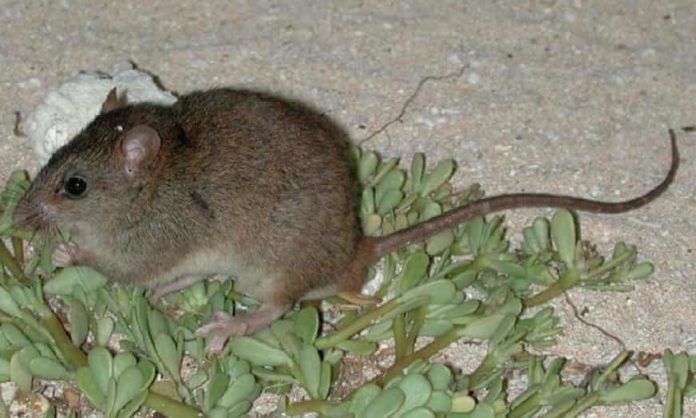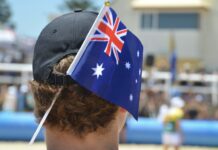There is an island up the very top of Australia in the Torres Straight that is big enough to allow a sports fan to set up a soccer field and still have space left over for the fans to stand. Putting changing rooms on the same island would be pushing a friendship – it’s that small. It is technically a Cay for those who like technical classifications, and if you ignore the 17m high light house tower, a visitor could easily become the highest point on the island simply by wearing a large hat.
Green turtles use the island to lay their eggs, as do a vast range of birds – brown boobies, sooty terns, common noddies – who have been observed in numbers up to 18000 crowding the island during the nesting season. The island, Bramble Cay, is the northernmost point of Australia and with absolutely minimal fanfare the Environment Minister, Melissa Price, formally declared this important breeding spot for animals feathered and flippered to now be free of an invasive introduced feral rat population.

Environmentalist groups around the world naturally praised the Government for… wait… no they didn’t, possibly because what Melissa Price’s statement actually said was, among many other things, that based on expert advice on the subject, the Bramble Cay Melomys was now extinct.
Oops. Extinct you say? How did that happen?
Well Climate Change(tm). Clearly.
We will get back to mocking that assumption later, but first some back-story.
Some time in the 1920s the little rat was first noticed on the island, having arrived via methods unproven from Cape York. After about 70 years of inbreeding of which even European Royalty would have been envious, the furry little failures on genetic diversity were declared a new species – again much like European Royalty – and this is where the big shedding of greenie tears has come from. It is not simply a case of an isolated colony of an introduced species dying off, it is a complete species that has been driven to extinction and, worse still, it was driven to extinction by human induced climate change.
Or that is what the world headlines suggest. A quick search engine on ‘Bramble Cay Melomys’ revealed to Your Author that CNN, the BBC, ABC and other members of the Legacy Media have been all over the climate change angle. Melissa Price has stated the animal is extinct. Ergo it was climate change, break out the headlines.
Lacking self awareness, these same media outlets seem to have forgotten that they were telling the world the furry little buggers were wiped out by climate change several years ago. Ms Price at that time had not said a word on the subject but it was headline time for the media back then as well.
Were they extinct in 2016, only to recover in time for the 2019 announcement?
Probably not actually. The last known documented capture of the little brown beastie was in 2004. Sighting claims exist for 2009 but survey attempts using traps and spotlight searches in 2011, 2013 and twice in 2014 found a grand total of zero. Considering this entire island is not much bigger than a suburban cricket ground, it is considered highly likely that the island was completely rat free as early as 2005.
So the beast is dead, again, but this time an Australian government department has made the announcement, so the lock step Love Media dragged out the headlines and preached the man made climate change end of the world narrative. Again.
The fact that the statement from Price’s office does not once mention the word “climate” has absolutely no effect on this discussion. Price’s office didn’t need to mention climate. All the media wanted from that statement was the word “extinct”. Experts from the Wilderness Society were more than willing to push the climate change angle, and if it is good enough for the Wilderness Society then it was good enough for the Nine Media at the SMH.
Climate Change. Shame on humans. “It was our responsibility to make sure it persisted,” said Tim Beshara, Wilderness Society federal policy director, “And we failed”.
Climate Change. Absolutely. Tim has spoken, and yes, that was sarcasm.
So what really killed them off?
We actually don’t know. This is a poorly studied population on an island only 3m high, in a part of the world subject to regular tropical storms. Maybe the rats drowned during a king tide. Maybe their genetic bottle neck evolved them all into a ratty Charles II of Spain and they drooled themselves to death in the corner. Maybe the nesting Brown Boobies pecked the beast to death. Maybe they were crushed by the Green Turtles during egg laying.
Maybe there never was a continuous population in the first place and the sightings over the years were simply newly re-introduced colonies that went through individual extinctions on an island simply not big enough, nor protected enough to sustain long term rodent life.
It is all well and good for writers from the SMH to tell their reader that living on a tiny island left the rats vulnerable to climate change, but that is like claiming that living on a busy highway leaves one vulnerable to being run over. Some places are just not realistic places for long term survival, and is clearly shown by the fact that most other glorified sandbars in the middle of the ocean simply do not have permanent mammal populations.
Nature, despite what greens want to tell you, is not in perfect harmony. It is in constant flux based around the problem of getting enough to eat for a period long enough to produce offspring and then repeating.
Continually.
Or dying.
This is nature. It can be unforgiving, and if guilt factories like Tim really believed it was our responsibility to be nice to a rodent at the top of Australia, then the kindest thing to do would have been to relocate each and every one of the creatures back to the mainland.
The Bramble Cay Melomys, if it even existed as a species in the first place, has been dead for 15 years, and deep down, who cares? After all, the Cape York melomy is utterly fine and as long as all the feral cats have something to munch on now all the birdlife has been decimated by windfarms, then the circle of life shall continue.
We’re Your XYZ.










